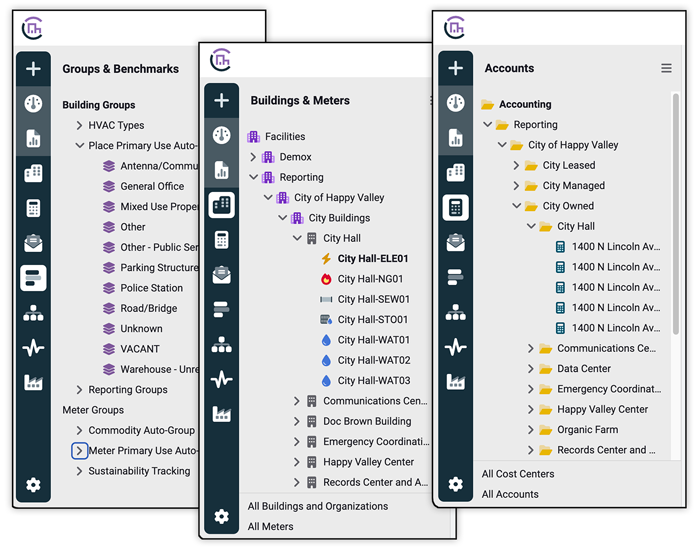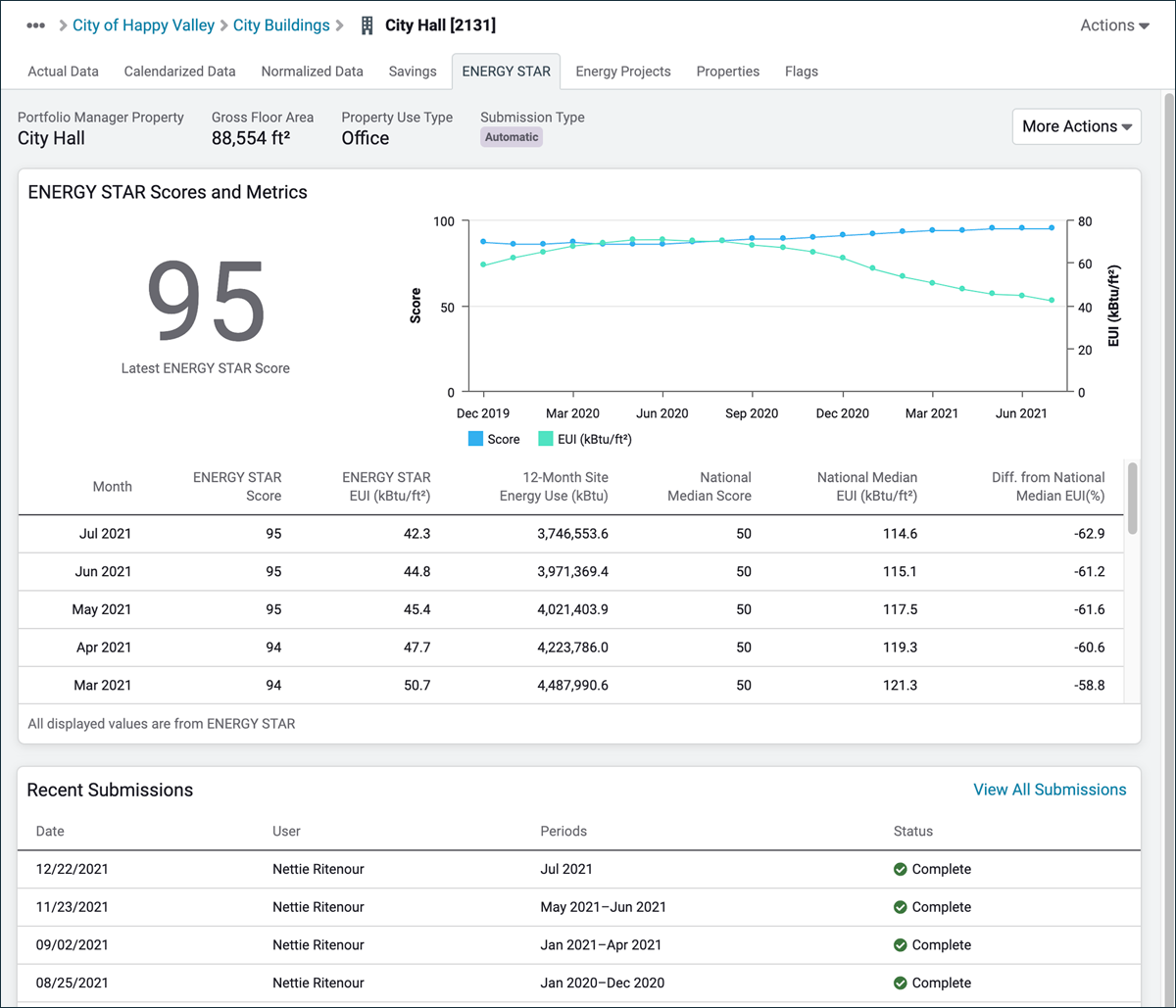Optimizing Operational Efficiency with Energy Monitoring
In a world increasingly focused on sustainability and carbon footprint reduction, energy professionals recognize that the most eco-friendly unit of energy is the one not used. This principle becomes particularly relevant amid global concerns about carbon emissions. While much attention is given to carbon calculations and alternative energy sources, significant opportunities lie in enhancing the efficiency of our buildings. In fact, 42% of global emissions stem from the built environment according to Architecture 2030.
This is why we believe the best place to start, when it comes to sustainability, is here in the buildings we live, work, shop, and play in each day. Optimal energy efficiency in buildings not only contributes to lower carbon emissions but also directly impacts the bottom line, saving tens of thousands in energy costs each year. None of this is news to the energy and buildings professionals who have been focused on this for decades. This blog outlines how modern energy managers and building operators use best practices, software, and protocols such a as International Performance Measurement & Verification Protocol (IPMVP), ENERGY STAR benchmarking, and ongoing energy monitoring to create and maintain more efficient building operations.
Let’s break it down to the basics before we dig in.
(Energy pros–you can skip to the next section)
What is energy efficiency?
Energy efficiency refers to the practice of using less energy to provide the same service or achieve the same outcome. It involves optimizing energy use to perform tasks, processes, or produce goods with minimal waste of energy. In essence, it is about maximizing productivity while minimizing energy consumption. This could be through the use of energy-efficient technologies (think lighting retrofits with more efficient bulbs), improved energy management practices (building or HVAC scheduling optimizations), or changes in behavior that lead to the conservation of energy (think about campaigns you can run at your facility to encourage people to turn off lights behind them and unplug machines before leaving for the weekend).
What is ENERGY STAR benchmarking, and how can it aid energy consumption monitoring?
ENERGY STAR is probably the best-known energy benchmarking system. ENERGY STAR uses its Portfolio Manager application to measure building energy efficiency on a 100-point scale that adjusts for a variety of building types. By defining your building type and related characteristics, and by entering your building utility bill data into Portfolio Manager, you can obtain a benchmarking comparison with closely matched peer buildings in your geographical region. A favorable benchmarking score (75 or above) grants you eligibility to pursue official ENERGY STAR certification, including a plaque for your building.
This easy form of benchmarking helps in understanding the building’s energy consumption relative to its peers and identifies opportunities for improvement in energy efficiency. It’s a key first step in energy consumption monitoring, managing energy usage, and reducing operational costs.
What is IPMVP?
The International Performance Measurement and Verification Protocol (IPMVP) defines a standardized framework that is used globally to quantify the results of energy efficiency investments and projects. Essentially, it provides guidelines for verifiably measuring and reporting the performance of energy conservation measures (ECMs) in a consistent and credible way. This enables businesses and organizations to reliably track the savings achieved through various energy efficiency improvements, thereby ensuring accountability and facilitating the success of energy conservation initiatives.
Using data For energy consumption monitoring
Understanding your energy data is a cornerstone in the quest for efficiency. At EnergyCAP, we believe the journey toward energy optimization starts with diligent measurement—after all, if you can’t measure it, you can’t manage it. Utility bills serve as a rich dataset, providing not just consumption figures but also historical insights across seasons. This historical utility bill data, covering at least a year, lays the groundwork for establishing accurate energy baselines. For the energy professionals who want to take things a step further, real-time data unveils granular energy-saving opportunities at the asset or device level and allows for a more proactive approach to energy management.
It’s important to consider your energy data structure. How do you want to report on energy consumption monitoring? Higher education organizations may want to group their buildings by department while commercial buildings may want to group their buildings by location. Do you need floor or zone level reporting details? You’ll want to make sure that you have installed energy consumption monitoring devices at the level to which you wish to report (more about this in the real-time data section of the blog).
EnergyCAP’s TreeViews enable you to set up your energy data to model your unique organizational structure. There is a TreeView for meters, buildings, and broader organizational divisions, a second for accounts and cost centers, and a third for vendors and rate schedules. These hierarchies are flexible and user-configurable and provide a cohesive structure for categorizing, navigating, and reporting on your data.

ENERGY STAR Benchmarking and compliance
As mentioned above, comparing your building performance to ENERGY STAR benchmarks is a great way to identify saving opportunities and prioritize energy projects. It’s important to note that many states, counties, and cities have passed laws mandating that building owners submit their monthly data to ENERGY STAR. We help our customers meet those mandates easily. EnergyCAP Utility Management has a direct integration with ENERGY STAR and can submit utility bill data on our clients behalf on a regular basis.
EnergyCAP customer, Miami-Dade County uses ENERGY STAR building ratings to benchmark their buildings. EnergyCAP UtilityManagement automatically uploads electricity consumption data to the Environmental Protection Agency’s Portfolio Manager. The EPA’s website uses the bill history to perform an energy performance comparison with similar buildings in its database. An ENERGY STAR rating (1–100) is returned. Results help Miami-Dade to prioritize energy performance improvement projects and seek ENERGY STAR building certification for those buildings that are in the top 25 percent (scoring 75 or higher).
Miami-Dade submits ENERGY STAR data for 167 buildings. EnergyCAP’s database and automated ENERGY STAR submittal process has helped them accurately and consistently submit the necessary data to begin working towards certification.

IPMVP options for verifying energy efficiency projects
With your building data in order, initiating an energy project using the IPMVP framework is your next step. While IPMVP offers guidance rather than enforceable rules, it lays out four distinct options for Measurement & Verification (M&V) calculations. Selecting the right option is critical to effectively evaluate your energy management initiative:
- Option A: Focuses on specific retrofit components.
- Option B: Similar to Option A but includes more comprehensive components.
- Option C: Evaluates the entire facility’s energy savings.
- Option D: Uses calibrated simulation for more complex or theoretical analysis.
Choose the one that aligns best with your project’s scope and goals.
IPMVP with Utility Bill Data – a great place to start
Since most energy management projects can be assessed effectively using utility bill data with Option C, let’s look at how this methodology works.
- Establish a Baseline. In Option C, we must first establish a baseline year. Typically, this period is the twelve months immediately prior to the implementation of the energy management initiative.
- Adjust the Baseline to Today’s Conditions. The next step is to adjust the baseline year to today’s conditions, accounting for factors outside the parameters of the energy management program. For example, if the weather was hotter today, we would need to determine the extent of the weather variable in terms of energy use and then adjust the baseline use to match the current conditions. This is a matter of fairness.
When all known variables have been accounted for, we would arrive at an energy cost value for the Baseline Year Adjusted To Current Conditions, which is referred to as the BATCC in EnergyCAP.
- Compare the BATCC to the current utility bills. The final step is to compare the actual utility bill cost with the BATCC cost. This compares what was actually spent with what would have been spent in a similar baseline year.
Consider this example:
In the base year, a facility consumes 10,000 kilowatt hours of electricity. At that time, the cost of the electric commodity was $0.10/kWh, so the cost was $1,000. Today, following the implementation of an energy initiative, consumption was reduced to 8,000 kWh at a price of $0.15/kWh. Today’s cost: $1,200.
Now the company financial officer might see the bill and complain about the increased cost (up $200 from the base year). But using the Option C methodology, we can demonstrate that BATCC cost would have been $1,500 (10,000 kWh x $0.15/kWh current commodity cost) without the energy management initiative. We can then subtract the actual cost of $1,200 from the BATCC cost to discover that our Cost Avoidance was $300.
IPMVP with real time energy data–a deeper dive for more advanced teams
The growth and user-friendliness of real-time energy monitoring has a significant role to play in enhancing M&V strategies for deeper, more specific decarbonization. A comprehensive real-time energy management (RTEM) platform (like EnergyCAP SmartAnalytics) involves installing sensors at the end-use of specific equipment, whether at individual breakers in an electrical panel or at a motor control center breaker and recording consumption in real time. This data is then used to develop metrics to display and quantify the real effects of comprehensive energy upgrades for IPMVP Option B.
The optimal way to incorporate real-time energy into your M&V strategy is to install breaker-level monitoring nodes on all relevant energy-consuming breakers well prior to implementation. A minimum of six (6) months will allow accurate weather-normalized data to establish a defendable baseline. Once the energy projects have been implemented, post-implementation consumption can be calculated and extrapolated to a full year’s worth of consumption using new real-time data. With each new day of data, the post-implementation extrapolation can be recalculated until a full year’s worth of data has been collected.
Using energy consumption monitoring software to measure and verify energy savings
As we reach the conclusion of our exploration into energy efficiency, it is clear that the implementation of the energy data structure, establishing baselines, and utilizing the IPMVP framework, coupled with the insightful analysis of both historical utility bill and real-time energy data, can significantly enhance a business’s operational efficiency and environmental stewardship.
Navigating the complexities of energy and sustainability data is no small feat, especially when relying solely on spreadsheets. Software such as EnergyCAP UtilityManagement for utility bill data and EnergyCAP SmartAnalytics for real-time energy data can be used independently or combined to give you a single source of truth for your energy and sustainability data measurement and verification. For a deeper dive into Measurement & Verification principles, continue your learning here.
By embracing these practices in an energy and sustainability software platform, organizations not only contribute to a more sustainable future but also enjoy the financial benefits of reduced energy costs. Let this be a call to action for businesses to harness the transformative power of IPMVP and ENERGY STAR benchmarking, to not just thrive in today’s market but to set a precedent for responsible energy consumption monitoring that will resonate for years to come.
 Best-in-class portfolio-level energy and utility bill data management and reporting.
Best-in-class portfolio-level energy and utility bill data management and reporting.
 Real-time energy and sustainability analytics for high-performance, net-zero buildings.
Real-time energy and sustainability analytics for high-performance, net-zero buildings.
 A holistic view of financial-grade scope 1, 2, and 3 carbon emissions data across your entire business.
A holistic view of financial-grade scope 1, 2, and 3 carbon emissions data across your entire business.
 Energy and sustainability benchmarking compliance software designed for utilities.
Energy and sustainability benchmarking compliance software designed for utilities.




